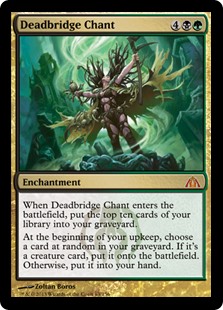Fully understanding and comprehending the entirety of all Magic’s terminology is a complex, labyrinthine endeavor that’s challenging to experienced players and down right scary to newcomers. The game doesn’t just insist that you learn about the basic tenants of turn structure and card interactions, but you’re also asked to understand the overarching strategies of each color and the often daunting task of building a deck to match whatever theme, mechanics, colors, and formats you want to pursue. It’s a lot to take in, and it’s no surprise that it can take Magic players several years to become fully comfortable with the general nuances of the game.
This says nothing of the deep dive excursion into the Comprehensive Rules that some among us are crazy enough to willingly consider.
What makes it even messier is that the language of the game itself has also changed over time, a byproduct of being a 25 year old game, which in its time has adapted to evolving card templates, numerous rules editors, and the addition or removal of various keyworded abilities.
It also doesn’t help that over time Wizards has also found ways of pushing the same card concepts into the game using slight variations of the same premise.
Take card draw, for instance. What is the real difference between ‘draw a card’, ‘reveal a card and put it into your hand’, and ‘return a card from your graveyard to your hand’? Although each have corner case differences in terms of usefulness, from a practical standpoint, they all provide the same core result of +1 card.
By changing up the text on cards, it serves a few different purposes (aside from being really annoying when searching for cards with disparate text but provide the same results). For one, it allows the designers to occasionally tweak mechanics already known to work and reintroduce them as new ideas. But it also sometimes provides enough wiggle room philosophically to allow a mechanical overlap into additional colors where it might not be allowed otherwise. In those cases it’s not quite a cheat or loophole insomuch as a justification along color lines, a bleeding of effects from one into the next in ways that may haven’t been seen before.
It is one such overlap that we look at with this week’s card.
Today we have: Deadbridge Chant

Name: Deadbridge Chant
Edition: Dragon’s Maze
Rarity: Mythic Rare
Focus: Card Recursion
Highlights: Despite some experimentation being used competitively when it first came out (as a means of fueling the block’s Scavenge mechanic), Deadbridge Chant’s lasting tenure has been as a casual recursion card through and through. It demonstrates, in effect, a strange de facto case of two other colors coming together to accomplish something a third color may do on its own, while still somehow remaining within its own region of the color pie.
In this case, it’s a means of drawing additional cards for at least 10 rounds without the need for Blue mana or the requiring that you share the benefit with other players a la Howling Mine.
Although Deadbridge really was created with the Golgari guild mechanics in mind – this was a Ravnica block after all – it wasn’t necessarily wholly adopted by those looking for ways to fuel their decks. Mostly because for those looking to recreate the thrill of its predecessor Dredge, Scavenge decks didn’t want to wait around for this card to work.
For them, it’s a fair criticism. Deadbridge Chant requires six mana to cast, forces you to mill ten cards, doesn’t trigger until your upkeep, and the card it targets for recursion is random. When you add all that together, it’s understandable why it was largely avoided in competitive circles.
In a Commander setting, however, this card is quite economical. The six mana casting cost isn’t that detrimental, and milling 1/10th of your deck isn’t nearly as scary as 1/6th. Moreover, anytime you can gain card advantage in multiplayer games is well worth considering, and waiting for an upkeep trigger to avoid sharing that advantage with other players is worth the timing trade-off. While the card chosen each round is technically random, its randomness is only based from among what would have been your next ten draws anyway, plus whatever is already in your graveyard at the time. It could even give you faster access to useful cards than the normal draw would have.
Beyond that, there is an added recursion bonus. That is, if your randomly choosen card is a creature, it gets dropped directly onto the battlefield. That in and of itself makes Deadbridge worth considering.
So as long as you have enough cards in your graveyard to benefit, Deadbridge provides an extra card draw in a Commander setting that’s less on the risk side of random and more on the reward. The real challenge is ensuring that you don’t try to abuse its benefits enough to draw attention and make it a target for quick spot removal.
No Blue mana required.
Keep an eye out for us to be regularly featuring other more accessible-but-worth-it Commander cards going forward. In the meantime, we’ll keep the light on for you.
![]()
You can discuss this article over on our social media!
